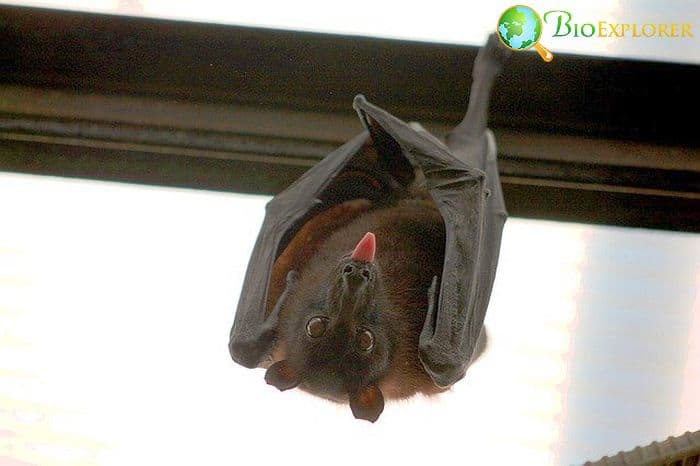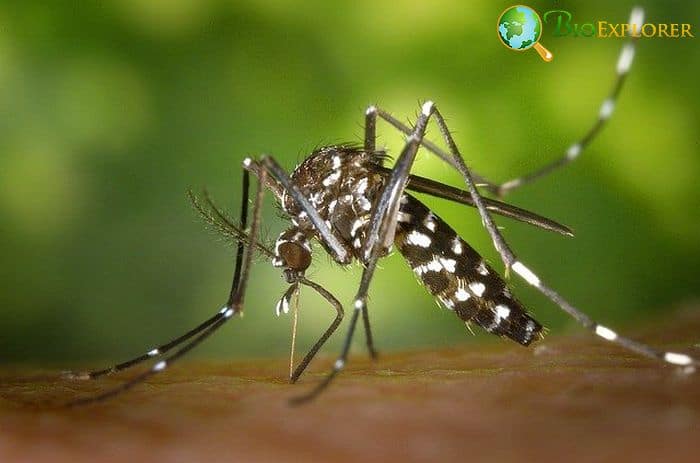What Animal Has The Most Sensitive Hearing

Animals with the Best Hearing: The ability to hear has been evolving in animals for a considerable time. In fact, this ability has evolved differently in vertebrate and invertebrate species.
Tabular array of Contents
- Vertebrates' Unique Hearing Abilities
- 1. Common vampire bat – Highly sensitive hearing at the lowest frequencies on land
- 2. Barn owl – Highly sensitive directional hearing
- 3. Wolf – All-time long-distance hearing
- 4. Pigeon – Best hearing at low frequencies among birds
- 5. Gentoo penguin – Can hear underwater
- vi. Humpback whale – Best low-frequency hearing underwater.
- 7. Killer whale – Best loftier-frequency hearing underwater
- 8. African Elephant – Best hearing of low frequency sounds on land
- 9. Rat – Sensitive to high-frequency sounds
- 10. Rabbit – One of the largest hearing ranges in daytime herbivore animals
- 11. Catfish – Best depression-frequency hearing among fish
- Invertebrates' Unique Hearing Abilities
- 1. Greater Wax Moth – Best ultrasound hearing
- ii. Bladder Grasshopper – Serial ears without a tympanicmembrane
- 3. Katydid – Highly sensitive ears with an eardrum
- four. Praying mantis – A unique group of insects that take only one ear.
- five. Mosquito – Best long-distance hearing
Some animals have no need for hearing – for example, most protrude species are substantially deaf. Other animals do need to hear; still, certain factors influence the type of ears they have and the sensitivity of their hearing:
- Body plan/beefcake of the animal.
- The environment in which this particular fauna lives.
- The lifestyle of the animal.
Vertebrates' Unique Hearing Abilities
Almost vertebrate animals can hear to some degree:
- Fish have -sensitive hairs cilia that can help take hold of the sound. Some fish likewise utilize their bladders or stones called otoliths in their skulls to grab the sounds in the water. Several fish, like catfish, have developed inner ears that are non unlike ours.
- Frogs lack outer ears. Still, they take the tympanum – the membrane that covers the inner ear and helps transmit audio.
- Reptiles are better adapted to hearing vibrations that are spreading through the state. Like frogs, they have a tympanum, a centre ear that contains a "hearing bone" – stapes, as well as the inner ear and a Eustachian tube.
- birds' ears are complex – they accept an outer ear, middle ear, and inner ear. They too have ossicles – small ear basic and a tympanum, and a cochlea with sensitive hair.
- Mammals have the most complex ear structure compared to other tetrapod vertebrates. They accept inherited the stapes os from reptiles. Two bones from the -reptilian jaw have transformed in the class of the development into other two new bones malleus and incus. These bones assistance in transmitting the audio in the eye ear. Mammals are also known for a nifty diverseness of outer ears. Some mammals have huge ears, for instance, bats or some fob species.
We can come across the best vertebrate hearers among the two groups with better-evolved ears – birds and mammals.
Each beast has a specific hearing range. The sounds they hear tin be measured in frequencies. The human ear usually can hear in a considerably wide range – from 20 Hz to 20000 Hz.
The sounds below 20 Hz are chosen infrasonic, and the sounds with higher frequencies are chosen ultrasonic. Many animals and insects have adapted to hear either in a broader range or to hear detail types of sounds, either infrasonic or ultrasonic.
![]()
ane. Common vampire bat – Highly sensitive hearing at the lowest frequencies on land

Common vampire bats are pocket-size animals with relatively small-scale (for bats) upright ears and black or brown fur. These bats tin can be found in the tropics and subtropics, where they predominantly feed on the blood of birds and large mammals. The sensitivity of hearing in bats is almost legendary:
| Animalia | Chiroptera | Phyllostomidae | Desmodus | Desmodus rotundus |
- Bats ears' shape assists them in catching sounds.
- Bats produce loftier-pitched sounds that are used for echolocation.
- Bats hearing range is more than comprehensive compared to humans: from 716 Hz to 113 kHz.
- This particular bat species is unique because they have extreme sensitivity to, specially, low sounds.
- It was discovered that vampire bats can also notice breathing sounds and even recollect them.
![]()
ii. Barn owl – Highly sensitive directional hearing

A barn own is a medium-sized owl with brownish and white feathers and a broad, most heart-shaped face disk. The ears of the owl have certain unique features:
| Animalia | Strigiformes | Tytonidae | Tyto | Tyto alba |
- They are hidden behind the feathers. There is no outer ear.
- The ears are located asymmetrically, one college and one lower.
- The face disk of the owl helps it catch audio waves.
- The hearing range of the owl is between 200 Hz and 12 Hz.
- Hearing of the owl does non decline with age.
![]()
iii. Wolf – Best long-distance hearing

A wolf is an efficient predator, and its sense of hearing is crucial for finding casualty. The structure of the animal'south ears is optimal for its needs:
| Animalia | Carnivora | Canidae | Canis | Canis lupus |
- The ears are triangular in shape and can rotate to better capture sounds.
- Ultimately, wolves tin hear upward to 80kHz, sometimes.
- The usual hearing range of the greyness wolf is between 25 kHz.
- The wolf can hear sounds from a considerable altitude, from 10 to xvi km, if there are no obstacles.
- Due to their acute directional hearing, wolves have excellent long-distance communication.
- Wolves and dogs tin hear very quiet -sounds between 5 and -15 db.
![]()
four. Pigeon – All-time hearing at low frequencies among birds

A mutual dove is a well-known urban center bird. It is very good at navigation and used to exist a messenger bird. As a rule, birds are near sensitive to sounds in the range between 1-4 kHz. Yet a mutual pigeon is unique:
| Animalia | Columbiformes | Columbidae | Columba | Columba livia |
- The upper limit for a pigeon is as high equally 10kHz.
- Pigeons can hear very low sounds – as depression as 0.05 Hz.
- Such depression sounds tin help pigeons with navigation, detection of h2o sources, and predict weather changes.
- Compared to humans, in that location is a 50 dB divergence in detection of low frequency sounds between humans and pigeons.
- Pigeons can hear those infrasounds from a considerable distance.
![]()
v. Gentoo penguin – Can hear underwater

Penguins are birds that commonly live close to the shore, as their main food source is fish. They take relatively good hearing, comparative to other birds. They also have some hearing abilities that are unique for them:
- The hearing range of the penguin is between 100 Hz and 15, 000 Hz.
- The penguins are known to make sounds underwater.
- Penguins can close down their ears when they deep dive.
- It was established that penguins can detect sounds underwater as high as 120 db and evade overly loud sounds.
![]()
half dozen. Humpback whale – Best depression-frequency hearing underwater.

The humpback whale belongs to the grouping of baleen whales. These whales accept a unique structure, baleen, that acts as a net or filter that helps them catch krill. They are enormous animals, and their skulls are peculiarly big. Humpback whales are known for singing underwater, and their hearing is particularly adjusted for this type of communication:
| Animalia | Cetacea | Balaenopteridae | Megaptera | Megaptera novaeangliae |
- The outer ear is a small opening in the skull without outer structures.
- Their middle and inner ear structures are modified for amend hearing underwater.
- Whales hear a sound as vibrations through the water of different length.
- A specialized tympanoperiotic complex detects sounds with a shorter wavelength.
- Sounds with longer wavelengths are transmitted through the whale's skull due to os conduction.
- The hearing range of the humpback whale is betwixt 15 Hz and 3 kHz.
- The humpback whales tin can hear low-frequency sounds from large distances.
- It was recently discovered that even prehistoric relatives of humpback whales could hear extremely depression frequencies.
![]()
7. Killer whale – Best high-frequency hearing underwater

A killer whale is an iconic bounding main mammal. It belongs to the toothed whales' group and tin actively hunt large prey-including bigger whales. Hearing is a crucial part of its life – both for hunting and communication:
| Animalia | Cetacea | Delphinidae | Orcinus | Orcinus orca |
- Killer whales and their relatives specialize in detecting ultrasounds at high frequencies.
- To better localize the sound, the center ear bones of the whale are isolated from their skulls.
- Its standard hearing range is from 0, 5 to 42 kHz, according to the latest enquiry.
- In some cases, killer whales can detect sounds at higher frequencies that reach 120 kHz, though their sensitivity to such high sounds is low.
- Killer whales also use echolocation for detecting prey and coordinating hunting strategy, and hearing plays a huge part in this procedure.
![]()
8. African Elephant – All-time hearing of low frequency sounds on land

Elephants are considered the largest land animals. They also take the biggest ears among land animals.
| Animalia | Proboscidea | Elephantidae | Loxodonta | Loxodonta africana |
- Elephants' big ears help them discover low-frequency sounds from the environment.
- Elephants tin can hear sounds as depression equally ten-16 Hz.
- Elephants do not have a bang-up high-frequency hearing – while humans tin hear sounds as high equally twenty, 000 Hz, elephants detect sounds no higher than 12, 000 Hz.
- Elephants regularly communicate with low-frequency sounds.
- Elephants tin detect secret vibrations with their anxiety, and this information is processed together with information on sounds.
![]()
ix. Rat – Sensitive to loftier-frequency sounds

A mutual rat is an animal that is normally active at night. Some rats tin can search for nutrient during the daytime likewise. Predominantly nocturnal life means that rats need a sensitive hearing. Their hearing range is shifted towards college frequency sounds compared to humans:
| Animalia | Rodentia | Muridae | Rattus | Rattus rattus |
- Their standard hearing range is between 250 Hz and 80kHz.
- Rats are the most sensitive to sounds between 8 and 38 kHz.
- In their "comfortable" range, rats tin can hear very quiet loftier sounds that humans would not hear completely.
- The eye and inner ear structures of rats mature after nascence, which is useful for scientists interested in how ears develop in mammals.
- Rats are often used for hearing research, as their ears are similar to human ones.
![]()
10. Rabbit – One of the largest hearing ranges in daytime plant eater animals

Rabbits are prey animals. Therefore, they rely heavily on hearing to find possible enemies:
- The rabbit ears tin rotate 270 degrees.
- Each rabbit ear tin rotate separately to precisely pinpoint the management.
- The rabbit hearing range is between 360 Hz and 42, 000 Hz.
- Rabbit ears besides serve equally an outlet for excess estrus.
- Rabbits tin notice sounds from a distance that exceeds 1 mile.
![]()
xi. Catfish – Best low-frequency hearing among fish

A catfish is a large predatory freshwater fish living predominantly virtually the lesser of rivers and lakes. These fish have quite developed senses, including hearing:
| Arius felis |
- Catfish take inner ears like to ours.
- The inner ears of a catfish contain semicircular canals for balance and fluid-filled sacs for hearing.
- The sacs inside the fish inner ears contain sensitive cells and structures chosen otoliths.
- Catfish accept specific differences from other fish ears: they take more sensitive cells and large otoliths.
- Catfish tin hear sounds from 50 to m Hz.
- Their hearing is geared towards lower sounds, and they hear all-time in the range of 100-200 Hz.
![]()
Invertebrates' Unique Hearing Abilities
In invertebrates, namely in insects, organs that helped them hear accept evolved approximately 19 times.
- These hearing organs have frequently evolved from so-called chordotonal organs – special structures that are basically bunches of sensory cells located on the insect skeleton's outer parts or subconscious betwixt tissue fibers.
- Many insect hearing organs find both vibrations and sounds that travel through the air because of their origin. Many insect ears take a tympanum – a membrane that vibrates in response to sounds, similar to vertebrates.
- Nevertheless, not all insects take this structure. Another feature of insect hearing is that non every insect has ears on their heads. Mostly, insects have ears on very different parts of their bodies.
![]()
Here are the examples of the almost unique ears in the world of insects:
i. Greater Wax Moth – All-time ultrasound hearing
The greater wax moth is a relative of butterflies. Different butterflies, whose larvae mainly feed on plants, the larvae of greater wax moth feed on bees' combs.
The adult moths are often eaten by bats, so they accept evolved highly sensitive hearing:
- Moths accept eardrums that are attached to their bodies, not their heads.
- The hearing range of this moth species was discovered to be between l-300 kHz.
- Wax moth hears the all-time at 80kHz.
- The bats tin can produce calls as loftier as 212 kHz, and the moths have adult a sensitivity to similar sounds to avoid their main predators.
- The moth hearing sensitivity is and so precise that they tin can differentiate between the bat call and the every bit high-frequency mating call of their own species.
![]()
2. Bladder Grasshopper – Serial ears without a tympanicmembrane
A bladder grasshopper is a nocturnal insect constitute in Southward Africa. This grasshopper species is most famous for its loud call.
This grasshopper has several unique features that help information technology hear:
- This species can transport acoustic signals at a altitude that tin can reach 2 km.
- The grasshopper has 12 "ear" organs located on its abdomen.
- The ears' complexity increases from lower to the upper abdomen.
- The lower 5 pairs of ears consist of simple sensory cells and are similar to chordotonal organs.
- The ear pairs located in the upper region are more complex and can contain approximately 2000 sensory cells.
- The hearing range of a bladder grasshopper is 1.4 to 4 kHz.
- These insects hear relatively loud sounds – from 60 to 98 db.
![]()
3. Katydid – Highly sensitive ears with an eardrum

Copiphora gorgonensis is a small katydid found in Colombia. This insect resembles a grasshopper yet is, in fact, a kind of cricket. Information technology has ane minor horn on its head. Recently, this insect has gained the attention of scientists considering of the unique features of its ears:
- This katydid'southward ears are located on the legs, right below its knee-like joints.
- Katydid's ears have dual eardrums.
- There is a unique fluid-filled chimera or vesicle inside the katydid ear.
- Due to this construction, the katydid ears work similar to mammalian ears: the vibration of the eardrum is transmitted through the liquid to sensory cells.
- The hearing range of a katydid is between 5,000 and 50,000 Hz.
![]()
four. Praying mantis – A unique group of insects that have only i ear.

There are multiple praying mantis species. These insects are predators. They unremarkably mimic harmless objects, similar twigs, and await for their potential prey – smaller insects. Mantises are often food source for bats besides. Previously, information technology was thought that mantises are deaf. This theory was later proven incorrect:
- A praying mantis has simply 1 ear.
- This ear is hidden in the insect's chest.
- Mantis ear has two eardrums facing each other located in a special groove.
- Mantis can hear between 30 and 60 kHz.
- Mantis uses its ear to detect bat calls every bit a predator evasion strategy.
![]()
five. Mosquito – Best long-distance hearing

Mosquitoes are insects that are both well known and much disliked every bit carriers of several diseases. These insects tin produce high-pitched sounds that are used for communication and finding mates. Their hearing has some interesting characteristics:
- Mosquito ears have no tympanum.
- Mosquito ears consist of long antennae covered in sensitive cells that detect sounds.
- Male mosquitoes have more than sensitive ears than female ones.
- These antennal ears can sense sound waves at a relatively wide range: 150-500 Hz.
- The mosquitoes tin hear sounds from every bit far as 10 m.
![]()
There is a surprising multifariousness of hearing adaptations among animals. In conclusion, we can say – information technology is not important what kind of ears yous have, or how sensitive they are. The nigh important matter is WHO you want to hear.
![]()
Cite This Page
Source: https://www.bioexplorer.net/animals-with-the-best-hearing.html/
Posted by: tarverwhers1980.blogspot.com

0 Response to "What Animal Has The Most Sensitive Hearing"
Post a Comment